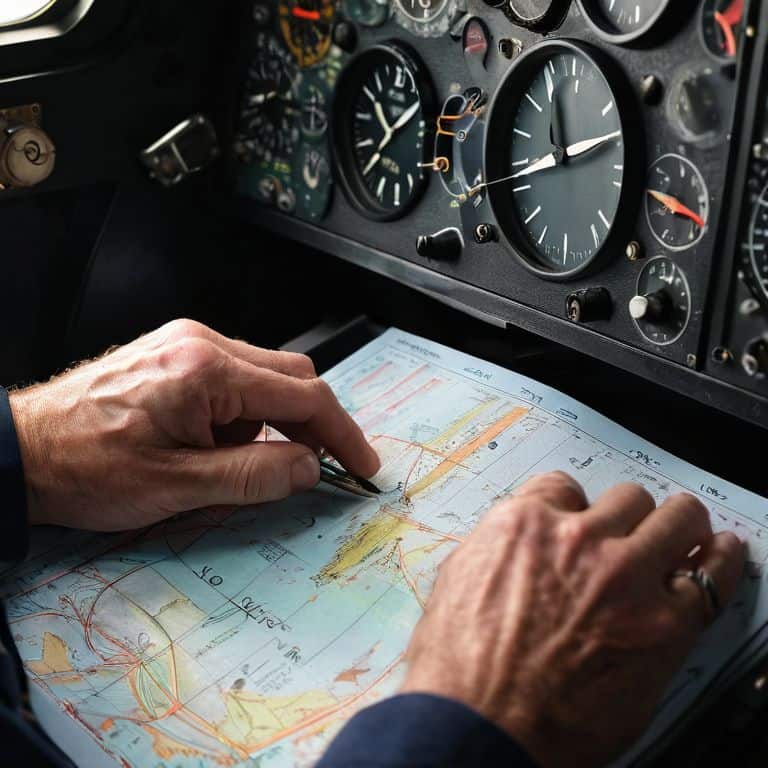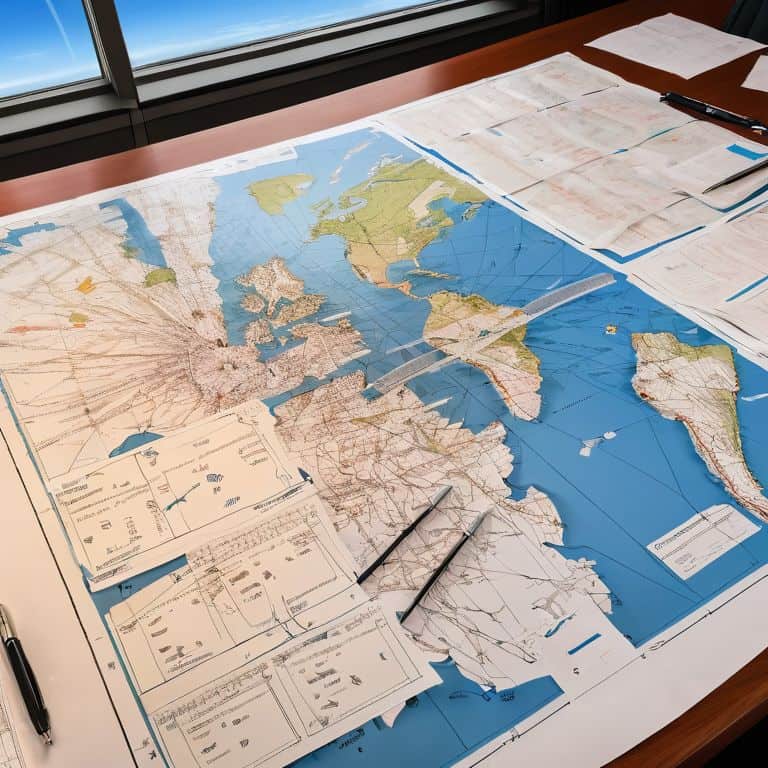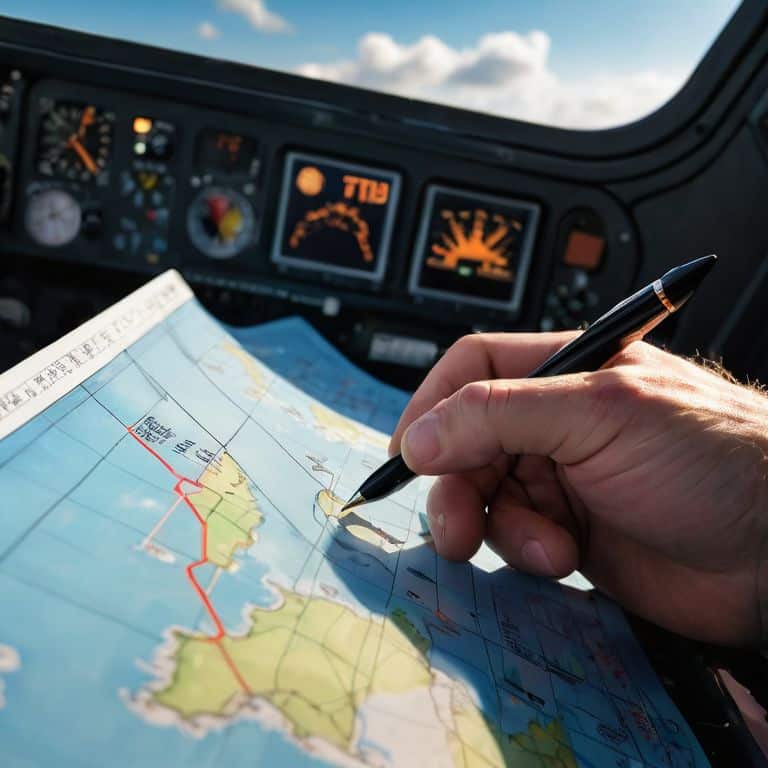I still remember my first flight as a bush pilot in Alaska, where I had to plan a flight route through treacherous terrain with limited visibility. It was a daunting task, but my instructor’s words echoed in my mind: “a good flight plan is like a roadmap to safety.” As I delved deeper into the world of aviation, I realized that planning a flight route is often shrouded in mystery, with many believing it’s a complex process reserved for experienced pilots. However, I’m here to tell you that how to plan a flight route is a skill that can be learned by anyone, regardless of their flying experience.
As we embark on this journey together, I promise to break down the process into simple, manageable steps. You’ll learn how to chart your course, taking into account factors like weather, air traffic, and fuel consumption. My goal is to provide you with practical advice that you can apply to your own flights, whether you’re a seasoned pilot or just starting out. By the end of this article, you’ll have a clear understanding of how to plan a flight route that’s both safe and efficient. So, let’s get started and take the first step towards making your flights more enjoyable and stress-free.
Table of Contents
- Guide Overview: What You'll Need
- Step-by-Step Instructions
- Mastering Flight Route Planning
- Navigating the Skies with Ease: 5 Essential Tips for Planning a Flight Route
- Key Takeaways for Flight Route Planning
- Navigating the Skies with Clarity
- Conclusion: Charting Your Course to Success
- Frequently Asked Questions
Guide Overview: What You'll Need

Total Time: 1 hour 30 minutes
Estimated Cost: $0 – $100
Difficulty Level: Intermediate
Tools Required
- Computer (with internet connection)
- Map (digital or physical)
- Calculator (optional)
Supplies & Materials
- Flight Planning Software (optional)
- Aeronautical Charts (digital or physical)
- Pencil and Paper (for note-taking)
Step-by-Step Instructions
- 1. First, let’s start by defining our flight objective, which includes determining the departure and arrival airports, as well as any intermediate stops or waypoints. This is crucial in planning a flight route, as it will help us decide on the best route to take, considering factors such as weather, air traffic control, and fuel efficiency.
- 2. Next, we need to gather all the necessary maps and charts that will aid us in planning our route. This includes aeronautical charts, which provide information on airspace, navigation aids, and obstacles, as well as weather charts, which help us anticipate any potential weather hazards along our route. I always tell my students to double-check their charts for any updates or revisions before embarking on a flight.
- 3. Now, let’s talk about weather planning. As a pilot, it’s essential to understand the weather conditions along our route, as well as any potential weather systems that may impact our flight. We need to check the forecast for our departure and arrival times, as well as any intermediate stops, and plan our route accordingly. I like to use the METAR and TAF reports to get a detailed understanding of the weather conditions.
- 4. With our weather plan in place, we can now start plotting our route on our aeronautical charts. We need to consider factors such as airspace restrictions, navigation aids, and terrain, and plan our route to ensure we stay safe and efficient. I always recommend using a flight planning tool or software to help with this process, as it can save time and reduce errors.
- 5. Once we have our route planned, we need to calculate our fuel requirements. This involves estimating our fuel consumption based on factors such as aircraft performance, weather conditions, and flight altitude. We need to ensure we have enough fuel to complete our flight, as well as any potential deviations or emergencies. I always teach my students to use a fuel consumption chart to get an accurate estimate of their fuel needs.
- 6. Next, we need to file our flight plan with air traffic control. This involves providing them with our flight details, including our route, altitude, and estimated flight time. We need to ensure our flight plan is accurate and complete, as it will be used by air traffic control to track our flight and provide us with any necessary clearances or instructions. I always recommend double-checking our flight plan for any errors or omissions before filing it.
- 7. Finally, let’s talk about pre-flight checks. Before we depart, we need to conduct a thorough pre-flight inspection of our aircraft, as well as review our flight plan and weather conditions one last time. We need to ensure our aircraft is airworthy, and we have all the necessary equipment and supplies on board. I always say that a good pre-flight check is key to a safe and successful flight.
Mastering Flight Route Planning

As we dive deeper into flight route optimization techniques, it’s essential to consider the factors that impact our journey. One crucial aspect is understanding airspace restrictions, which can significantly affect our route. By familiarizing ourselves with these restrictions, we can create a more efficient and safe flight plan. I always tell my students to think of it like navigating through a complex maze – you need to know the rules to find the best path.
When it comes to navigation, using GPS is an invaluable tool. It allows us to pinpoint our location and make adjustments to our route as needed. However, it’s also important to have a backup plan in place, such as a physical map or a secondary navigation device. This ensures that we’re always prepared for any unexpected situations that may arise.
To take our flight planning to the next level, we can start creating a flight plan template. This helps us to streamline our process and ensure that we don’t miss any critical steps. By incorporating weather forecasting for pilots into our template, we can make more informed decisions about our route and adjust accordingly. This might involve checking for any adverse weather conditions or airspace restrictions that could impact our flight.
Optimizing Routes With Weather Forecasting
When planning a flight route, understanding the weather forecast is crucial. Just like a hiker checks the weather before a backcountry trip, pilots need to consider the conditions they’ll face in the air. I teach my students to always check the forecast before filing a flight plan, looking for potential hazards like thunderstorms or turbulence. By doing so, we can optimize our route to avoid these areas, ensuring a safer and more efficient flight.
By incorporating weather forecasting into our route planning, we can make informed decisions about altitude, route changes, and even fuel consumption. It’s like navigating through a mountain pass – you want to know what’s ahead to choose the best path. With the right weather information, we can create a smoother, more enjoyable flight experience for everyone on board.
Understanding Airspace With Gps
When planning a flight route, understanding airspace is crucial. I like to think of it as navigating through a complex maze, but with GPS, it becomes much more manageable. Imagine you’re on a backcountry hike, and you need to find your way through unmarked trails – you’d use a map and compass to stay on track. Similarly, GPS helps us pilots stay aware of our position within different airspace classes, ensuring we avoid restricted areas and follow the correct protocols.
By integrating GPS data into our flight planning, we can visualize airspace boundaries and plan our route accordingly. It’s like having a detailed topographic map, but instead of terrain, we’re looking at altitude restrictions, air traffic control zones, and other critical factors. With this information, we can make informed decisions and adjust our flight plan to ensure a safe and efficient journey.
Navigating the Skies with Ease: 5 Essential Tips for Planning a Flight Route

- Start by defining your flight’s objective, including the departure and arrival airports, to determine the best route
- Understand the different types of airspace and their restrictions to ensure a safe and compliant flight
- Use GPS and mapping tools to visualize your route and identify potential hazards or areas of high traffic
- Stay up-to-date with the latest weather forecasts to optimize your route and avoid potentially hazardous conditions
- Regularly review and update your flight plan to account for any changes in weather, airspace, or other factors that may impact your journey
Key Takeaways for Flight Route Planning
Always start by understanding your aircraft’s capabilities and the airspace you’ll be flying through, just like how a good hiker studies the terrain before a trek
Integrate weather forecasting into your planning to optimize your route for safety and efficiency, considering factors like wind, turbulence, and air traffic
Practice using GPS and mapping tools to visualize your flight path and make adjustments as needed, keeping in mind that a good flight plan is flexible and takes into account multiple scenarios
Navigating the Skies with Clarity
Planning a flight route is not just about plotting points on a map, it’s about understanding the journey, anticipating the challenges, and executing with precision – much like life itself, where every decision is a crossroads that requires careful consideration and a clear sense of direction.
Daniel Sato
Conclusion: Charting Your Course to Success
As we conclude our step-by-step guide on how to plan a flight route, let’s summarize the key points we’ve covered. We started with the basics, understanding that mastering flight route planning is all about breaking down complex topics into simple, manageable steps. We then dived into the importance of understanding airspace with GPS and optimizing routes with weather forecasting. By following these principles and practicing regularly, you’ll become proficient in planning safe and efficient flight routes. Remember, the key to success lies in attention to detail and a thorough understanding of the fundamentals.
As you embark on your journey to become a skilled flight route planner, keep in mind that the sky is not the limit – it’s just the beginning. With dedication and persistence, you’ll be able to chart your course and navigate through even the most challenging situations. Always stay curious, keep learning, and never stop exploring. The world of aviation is full of wonders, and with the right skills and knowledge, you’ll be able to soar to new heights and make your dreams a reality.
Frequently Asked Questions
How do I determine the most fuel-efficient route for my flight?
To determine the most fuel-efficient route, consider wind patterns, air traffic control restrictions, and altitude. Think of it like navigating a hiking trail – you want to take the path with the least resistance. I’ll show you how to use weather forecasting tools and GPS to optimize your route, just like I do with my students in ground school.
What are the key factors to consider when planning a flight route over mountainous or rugged terrain?
When planning a flight route over mountainous terrain, consider factors like wind patterns, turbulence, and airspace restrictions. Think of it like navigating a narrow canyon – you need to know the safest path and potential hazards. I teach my students to use terrain-awareness tools and consult weather forecasts to ensure a smooth flight.
Can I use online tools or apps to help plan my flight route and obtain necessary clearances and permits?
Absolutely, there are many online tools and apps that can assist with flight planning, such as ForeFlight or Garmin Pilot. These resources can help you obtain necessary clearances and permits, and even provide real-time weather updates. I recommend exploring these options to streamline your planning process and ensure a safe, successful flight.



